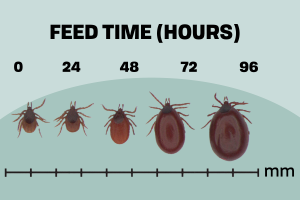Necrotizing fasciitis is a rare but life-threatening condition that can be caused by a variety of different types of bacteria. Dogs are not the only animals to contract necrotizing fasciitis, it’s also common in rabbits and horses. In this article, we will discuss whether or not dogs can get necrotizing fasciitis and what you need to do if your dog does have necrotizing fasciitis.
So, are dogs susceptible to necrotizing fasciitis?
In rare cases, dogs can contract necrotizing fasciitis if they come into contact with certain types of bacteria such as Staphylococcus pseudintermedius or Streptococcus pyogenes and have a compromised immune system at the same time. This could occur if a break in the skin allows necrotizing fasciitis pathogen to enter.
It would then spread through the bloodstream to the entire body causing systemic toxaemia.
How do prevent dogs from getting necrotising fasciitis?
Unfortunately, necrotizing fasciitis is a difficult condition to prevent. However, there are some steps you can take to help reduce the likelihood of your dog contracting necrotizing fasciitis:
- Keep wounds clean (see also ‘DIY Comfy Alternative To The Cone Of Shame‘) and avoid contact with any other dogs until they have healed completely
- Use caution if your pet has had surgery or an injury recently as these types of injuries make it easier for necrotising fasciitis bacteria to enter through a break in the skin (see also ‘Products That Work To Treat Dog Elbow Callus‘). For example, don’t let them lick their stitches even though they might be tempted!
How long does it take to recover from necrotizing fasciitis?
Necrotizing fasciitis is a serious condition and it can be fatal. It’s important that you contact your vet or an animal emergency facility immediately if you believe your dog has necrotising fasciitis so they can provide the appropriate treatment as soon as possible- for example, antibiotics, intravenous fluids, etc.
Staphylococcus pseudintermedius is usually killed by natural body defences but necrotizing fasciitis bacteria such as Streptococcus pyogenes are more difficult to kill and have been known to survive in humans even after heavy doses of antibiotic therapy.
The prognosis depends on how quickly these types of treatments were initiated because untreated cases may lead to sepsis which can lead to septic shock and organ failure. Necrotizing fasciitis is often referred to as a “flesh-eating disease” because of the severe damage that occurs when it spreads throughout the body. The bacteria can cause tissue death, muscle breakdown, and skin sloughing which has led to extreme cases where limbs had to be amputated in order for patients to survive.
With proper treatment, necrotizing fasciitis should not result in permanent physical disabilities but residual effects may include chronic pain or fatigue from temporary nerve injuries such as tingling sensations or weakness. Staphylococcus pseudintermedius infections have also been known to trigger inflammatory bowel diseases like Crohn’s Disease.
Can I get necrotizing fasciitis from my dog?
You can contract necrotizing fasciitis from your dog if they have Staphylococcus pseudintermedius or Streptococcus pyogenes and their immune system is compromised. It could come into contact with a wound on your skin that has not healed properly or a surgical wound that has not been attended to.
Staphylococcus pseudintermedius is also fairly common in the environment and can be found on the skin, hair, clothes, and in contaminated food scraps so it’s possible for you to contract necrotizing fasciitis from your dog if they’ve come into contact with Staphylococcus pseudintermedius.
To conclude, necrotizing fasciitis is a rare but deadly disease that can be fatal for dogs. It progresses rapidly, often causing the death of your dog within 24-48 hours. The bacteria are found in soil and other places where there’s been contact with infected animals or people. So, if you see signs of necrotizing fasciitis on your pet – redness around wounds, swelling at the site of an injury – take them to a vet immediately!
You should also know that humans have contracted this infection from contact with their pets; it’s very rare (less than one case per million) but worth mentioning because it can happen! If you’ve ever had a dog experience necrotizing fasciitis let us know.






My very recent experience of Necrotising Fasciitis.
Last Saturday we were camping in Yorkshire and our dog got up as normal, had breakfast and went to the loo. No sign of any problem. About an hour later I noticed she had a slight limp and examined her leg and paw. There was no sign of any injury, stone or thorn so I thought perhaps she had an aching muscle form the long walk we did the day before. By the time we had packed the tent away and loaded the car to drive to Scotland to stay with a friend we noticed the paw was slightly swollen. At this point we were thinking she had been stung as we’d seen a wasp in the tent earlier. We arrived in Scotland and our friend suggested it might be an adder bite as he’d had experience of this with his dog and said it looked similar. She was also not wanting to eat so we took her to an emergency vet and they kept her in overnight, treating her with antibiotics and pain killers but said they didn’t know what was causing the swelling and couldn’t see any puncture wounds indicating an adder bite or any other injury.
They phoned in the morning to say her vitals were good and her temperature had gone down but they wanted to keep her in as the swelling had not gone down. We had another call to say the swelling had spread a little but they were keeping an eye on it. I asked if it was life threatening and was told it wasn’t. We had another call at about 5pm saying that they were very concerned as it had now spread right up her leg and on to her chest and that they thought it might be Necrotising Fasciitis, something I’d never heard of. They wanted us to collect her and take her to a vet hospital nearby as they felt they couldn’t help her. By the time this was organised it was 9pm when we arrived at the hospital. She was taken in and assessed for an hour. We were told that it was either Necrotising Fasciitis or an adder bite and that more testing was needed. At 1pm we had a call to say it was Necrotising Fasciitis and that amputation of the leg and shoulder was needed but even with that, she only stood a 50% chance of survival. We took the decision at this point to have her put to sleep as we didn’t want her suffering any more. We were told it is very rare and difficult to spot at an early enough stage to have a positive outcome. I guess the lack of an obvious break in the skin didn’t help with a timely diagnosis. As the hospital was a teaching hospital they asked if they could do an autopsy which hopefully will shed some light on how she became infected and why a seemingly healthy 9 year old dog would succumb to such an infection. Perhaps she had an underlying condition that we were unaware of that had compromised her immune system. We’re obviously devastated and over the last week I have done a lot of reading about it which is how I found this blog.